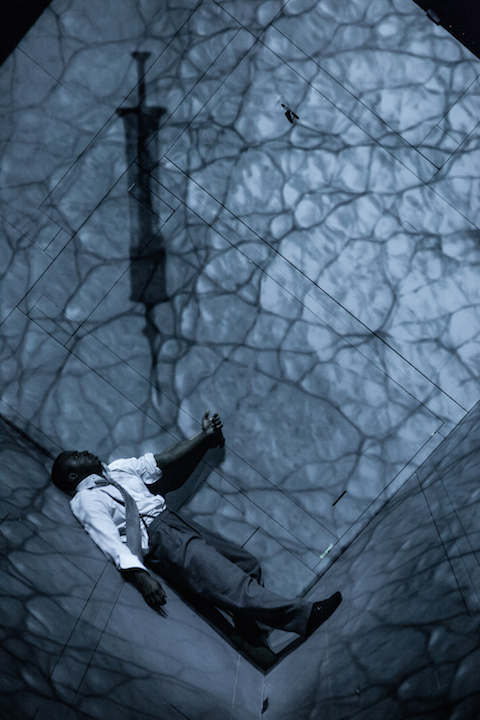
The poetics of Robert Lepage
Asking whether one prefers Robert Lepage’s theater or the theater of, say, Annie Baker, is like asking whether one prefers poetry to novels. Where most playwrights, like most novelists, prefer narrative that is ultimately linear, following the sacred arc of theatrical action, Lepage, like many poets, is obsessed with the personal, the associative, and the imaginative. Those latter three are not often linear, or even verbal. They exist most potently in the world of image and metaphor.
That they exist in the theater through technology and engineering is perhaps an irony, but one that suggests that science and magic are not as far apart as we may believe.
In Needles and Opium, Lepage revisits a theater piece that he performed originally as a solo piece in 1991. This reworking has been produced by Lepage’s company Ex Machina, which describes itself as “a laboratory” for theater that combines a host of performance options creating a theater of mixed media. Needles and Opium is currently playing at A.C.T.’s Geary Theater.
The associative and the personal in Needles and Opium stems from Lepage having stayed in Room 9 in a hotel in Paris, doing voice over during the day and suffering at night from the pain of a lost love. What he was to find out was that jazz trumpeter Miles Davis and French singer Juliette Greco shared this same room during their intense love affair in 1949. Their separation and Davis’ return to the U.S. resulted in the trumpeter’s own fall into despair and heroin. And in 1949 Jean Cocteau, whose work Lepage had admired since college, was returning to Paris from New York, also tormented by lost love. Cocteau took opium to salve his pain. A string of events that Lepage finds meaningful.
The play is a series of vignettes that juxtapose moments in the lives of these three lovestruck and suffering souls. The characters include alter ego Robert, a Quebecois actor played by Olivier Normand. Normand also plays Cocteau, declaiming sections of the French surrealist’s writings. Miles Davis is played by a silent Wellesley Robertson III, lips glued to his trumpet, his speech rendered as “My Funny Valentine”, and other plangent Miles’ classics.
No plot is offered. The events are like tarot cards dealt out: all from the same deck but interpretation is open to the viewer.
What holds everything together is the evocative and subliminal imagery.
A claustrophobic three-sided cube revolves in the center of the darkened stage, itself a cube within the black cube of the theater. As the cube revolves projections on the surface of the cube walls change the setting, and things, such as a bed in Room 9, rise out of sides of the cube, then sink down and disappear. A recording studio rolls into sight. Then, a back alley in New York City. And more.
The three characters crawl through openings, walk suspended along cubic edges, and somersault into the air. Normand tumbles back and upward into a starry sky, where as Cocteau he preaches to Americans about how they treat artists (badly). And Robertson crawls spiderlike down the interior of the tilted box, making his way to a bathtub just outside the cube, where a woman beckons him toward the bath and her open legs.
The kinetic smoothness of the turning cube, the dissolving objects, the translucent projections all combine to create a near hallucinogenic atmosphere. What Lepage is mapping out is not a personal history, or any history at all, but rather the landscape of imagination. Isolated and confined within the individual but at the same time expansive, poetic and shifting.
A different kind of theater indeed.
– Jaime Robles
Needles and Opium continues at The Geary Theatre through April 23. For information and tickets, visit act-sf.org.
Photo: Wellesley Robertson III as Miles Davis confronts the demon of heroin. Photo by Nicola-F Vachon.
